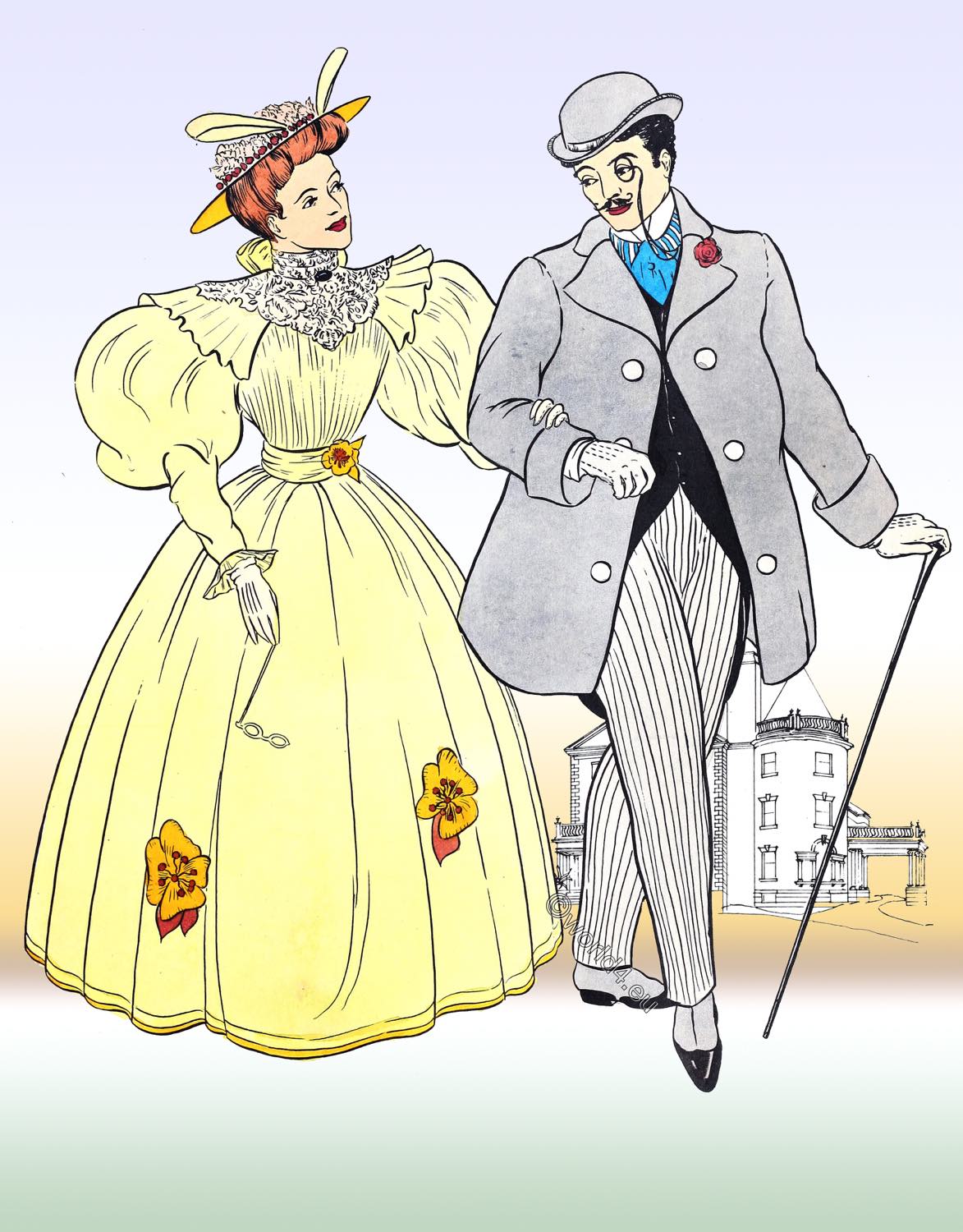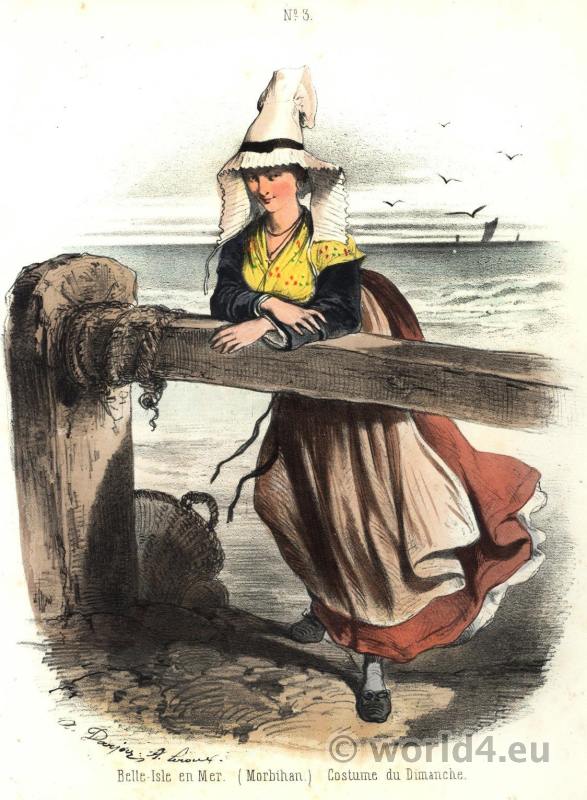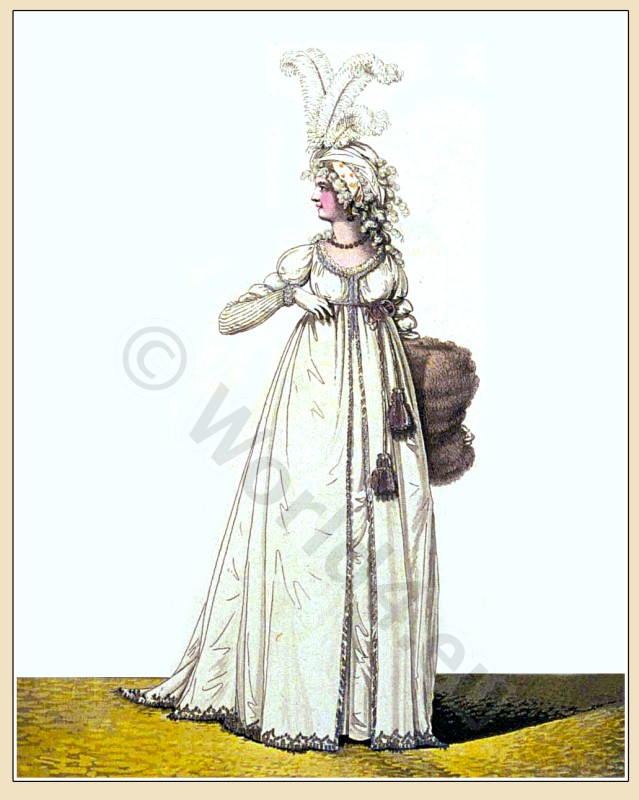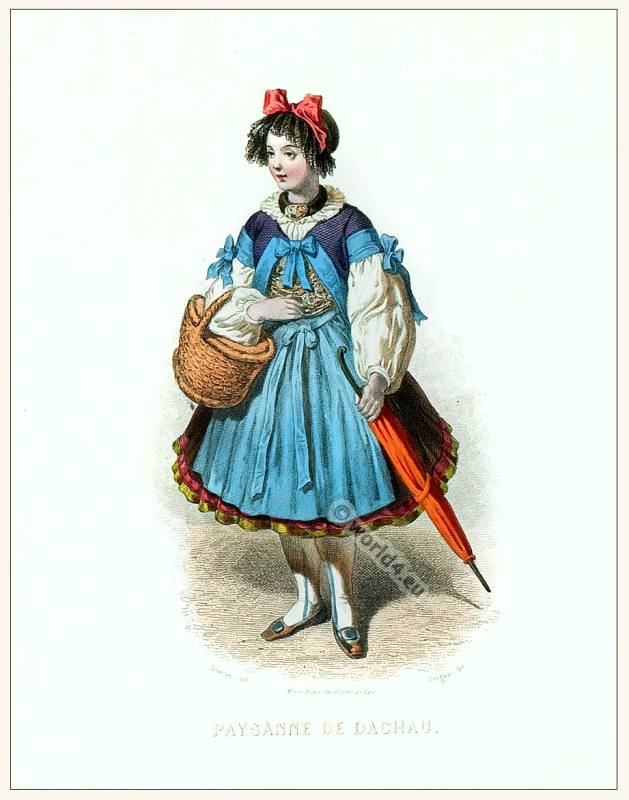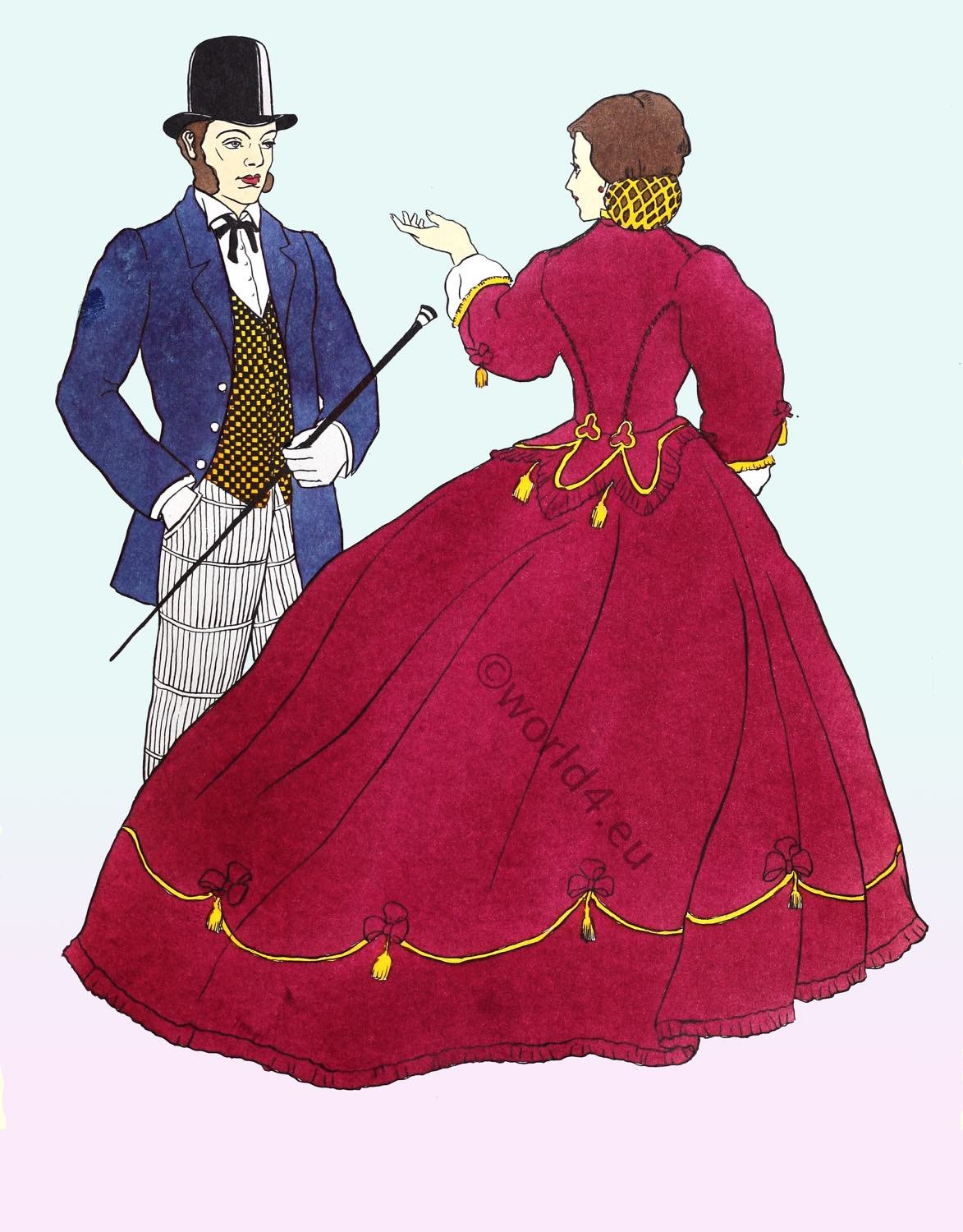
Informal afternoon outfit 1860’s.
EARLY VICTORIAN
PLATE NO. 102
In the 1850’s and 1860’s a sudden interest in stripes, plaids, and checks was shown in men’s costume. It seemed to be an attempt to recapture the color and gayety of an earlier day.
The gentleman pictured here is dressed in an informal afternoon outfit of the 1860’s. He is wearing the “plug” hat, a sort of high derby made of stiff felt which made its appearance at this time and became more popular in the eighties. He wears a full growth of sideburns.
The garments worn are of the same nature as the modern informal ensemble. The shirt has a soft turned-down collar and with it he wears a narrow black string tie. The sack coat is longer than the modern coat. Note how similar it is in cut to the modern suit coat. The checked vest is single-breasted and collar- less, and fits the body naturally. The trousers are without crease or cuff and are rather full, narrowing slightly as they reach the shoes. The walking- stick is a popular accessory.
The gown on this plate shows the transition between the full, rounded skirts in Plates 100 and 101 and the bustle of the late 1860’s. The skirt is voluminous, but a great deal of the material has been pushed to the back, giving to the outline the form of son. isosceles triangle. The combined length and fullness almost make a train at the rear. The whole skirt is supported by a steel frame. Below the knees is placed a ribbon trimming that is pointed up at regular intervals with bows and tassels. The hem displays a short, stiff ruffle that matches the trimming on the bodice.
The waistline is form-fitting and rounded, and the bodice modestly trimmed with ribbon ruching along the seams. The shoulder seams indicate the off-the-shoulder fad and the high neckline adds to the effect. The sleeves, which have lost a great deal of the previous period’s fullness, are terminated at the wrists with soft turned-back cuffs banded in ruffles, and accentuated with ribbon bows placed near the elbows. The skirted bottom of the bodice is that part which gradually became larger and fuller as fashion progressed toward the bustle. It is merely a decorative piece of material to cover the break between waist and skirt.
The hair-dress shown here is modest—parted in the middle and drawn back over the ears in the form of a large loose knot, which is covered by a net.
History of Costume
Related
Discover more from World4 Costume Culture History
Subscribe to get the latest posts sent to your email.

